
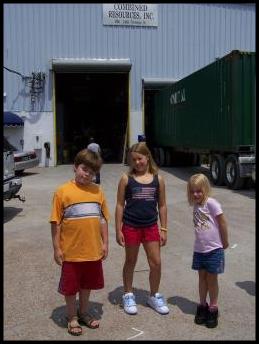
|
Steve Ollech is the main man at the paper recycling plant in Nashville, TN. The company has plants all around the USA and even one in China. If you have ever wondered what happens to paper from these big companies (which can have all kinds of mishaps) and what they do with all that—well, who knew that it was all resalable, and worth money. So, for those of you afraid of what is ending up in our landfills, you will be glad to know there are places like Steve’s all around the country!
|
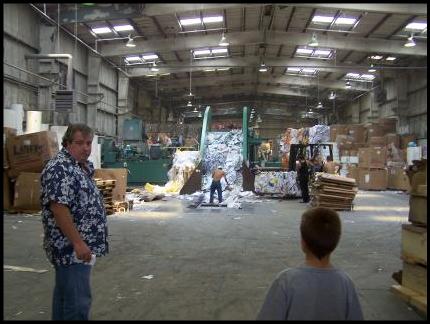
|
Here are the kids outside of the paper plant in Nashville, TN |
|
Inside you see the huge sorter that takes the mountains of every kind of paper you can imagine—and sorts and packs it into these massive bales. The paper is sold by weight to all sorts of different companies, many of which are overseas. Below, the girls pose with a finished bale. |
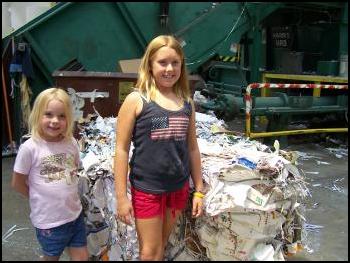
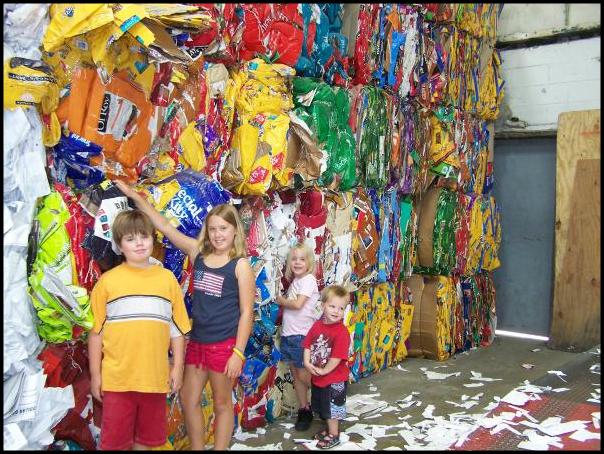
|
To the left, the kids pose with misprinted dog food bags. These bags are on their way to China, because the Chinese use the center part of the bag, and further recycle the outside and inner plastic liners. The mid section is a purer paper since it has no print on it, it is easier to process and worth more money than the plastic liner or the printed outside. These bags will be loaded onto ocean freighters and shipped to China that way. Once there, they will be manually separated. |
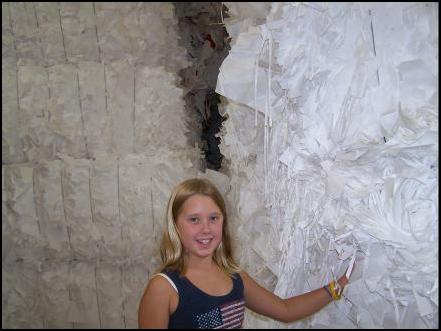
|
Audrey is posing with FedEx mailer bags that have been shredded. There are people who buy these for the nylon built into the bags. They get the nylon out by spinning it at a very high speed. Which leaves us asking—who thinks of this stuff? |
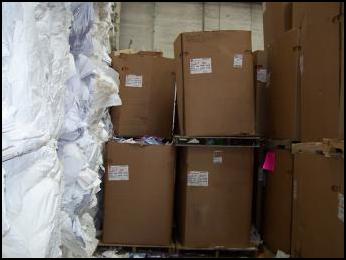
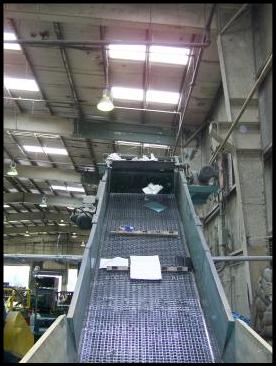
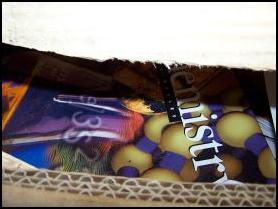
|
Even as a lifelong student, and teacher myself, I have to say, I never gave much thought to where textbooks go to die. Now, I know. I always assumed they went to less fortunate countries like Africa, and while some do, many end up here at the paper plant. They are put through this machine which chews up the entire book, cover and all for recycling. Many of the books I saw were in good shape, but because information is always changing and upgrading, there is a huge amount that ends up in plants like this. Money is made here by having a good grinder that works at a fast speed. Steve has two, and the stronger one is on the fritz, so he is shipping many of these books to India where they will be separated by hand. It doesn’t seem like it could be cost effective to do all this, but it is. |
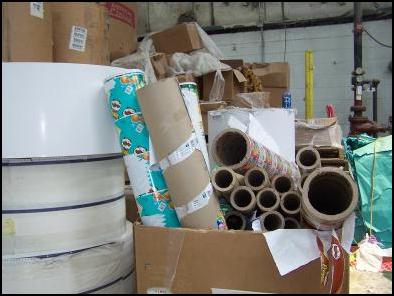
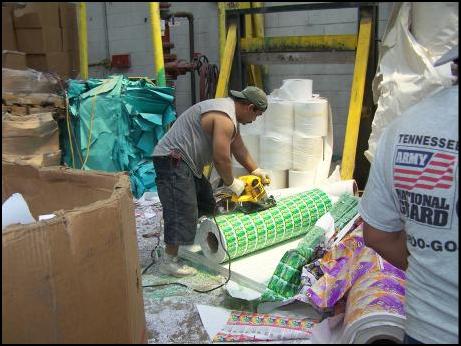
|
Can you recognize these product rolls? They are the end of the rolls from the plant that prints the containers for things like Pringles, and Flavor-aid juice mix. I forget why he is cutting the rolls. I think it was so the paper could be separated from the cardboard roll. |
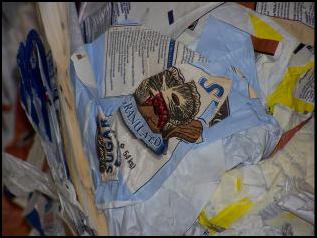
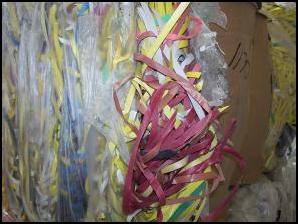
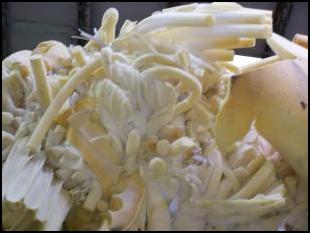
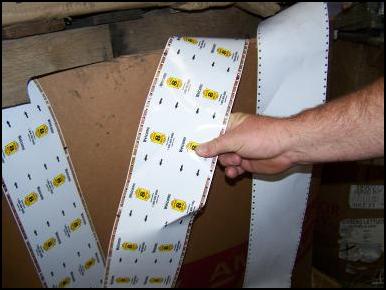
|
Above, misprinted sugar and flour sacks are ready to be recycled. |
|
This foam is also 100% recyclable |
|
This is a bale of nylon strapping that will be melted down and used again. |
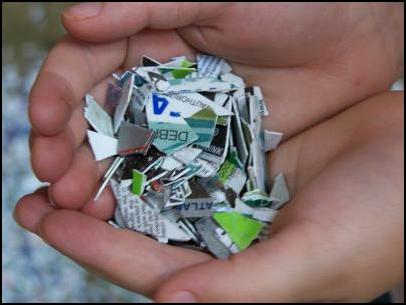
|
In addition to processing paper for recycling, Steve’s one of only a few people who has a license for destruction of sensitive materials. Here are hotel room keys that have not yet been destroyed, and a handful of what is left of your credit card after it goes through the shredder! |
|
Things we didn’t know before we went here:
Paper that is recycled is sent all over the world. The demand for things we toss out in other places can be very high.
All plastic is 100% recyclable, even Styrofoam. The problem is, Styrofoam is not easy to process so therefore is not cost effective, which is why many places don’t do it.
The purest plastic smells like mandarin oranges when burned.
Bags that have more stretch to them (like Target bags) have more fillers in them and are less valuable than the bags that split easily (Wal-mart) because it is a harder process to recycle them.
All paper can be recycled. The value is placed by how much processing has to go into it to make it back to usable...so, heavily printed and coated papers are less valuable than pure center dog food bag liners.
|